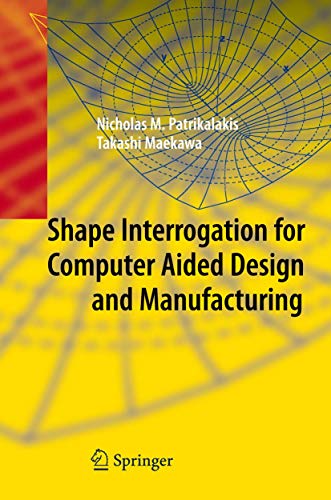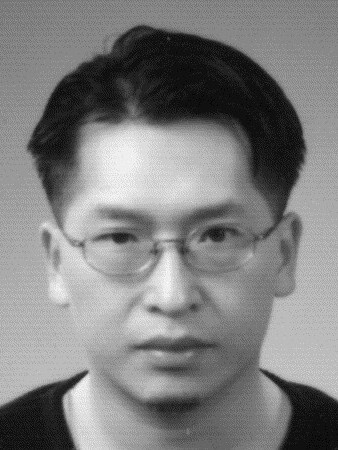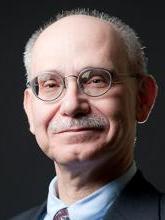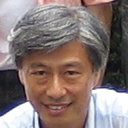
Shape Interrogation for Computer Aided Design and Manufacturing
This book focuses on shape interrogation, which is the process of extraction of information from a geometric model and a fundamental component of Computer Aided Design and Manufacturing (CAD/CAM) systems.
Tag(s): Computer Aided Mathematics
Publication date: 28 Feb 2010
ISBN-10: 364204073X
ISBN-13: 9783642040733
Paperback: 424 pages
Views: 16,902
Shape Interrogation for Computer Aided Design and Manufacturing
 This book focuses on shape interrogation, which is the process of extraction of information from a geometric model and a fundamental component of Computer Aided Design and Manufacturing (CAD/CAM) systems.
This book focuses on shape interrogation, which is the process of extraction of information from a geometric model and a fundamental component of Computer Aided Design and Manufacturing (CAD/CAM) systems.
Publication date: 28 Feb 2010
ISBN-10: 364204073X
ISBN-13: 9783642040733
Paperback: 424 pages
Views: 16,902
Document Type: Textbook
Publisher: Springer-Verlag GmbH
License: n/a
Post time: 03 Oct 2022 05:00:00
Nicholas Patrikalakis wrote:Shape interrogation is the process of extraction of information from a geometric model. Shape interrogation is a fundamental component of Computer Aided Design and Manufacturing (CAD/CAM) systems and was first used in such context by M. Sabin, one of the pioneers of CAD/CAM, in the late sixties. The term surface interrogation has been used by I. Braid and A. Geisow in the same context. An alternate term nearly equivalent to shape interrogation is geometry processing first used by R. E. Barnhill, another pioneer of this field. In this book we focus on shape interrogation of geometric models bounded by free-form surfaces. Free-form surfaces, also called sculptured surfaces, are widely used in scientific and engineering applications. For example, the hydrodynamic shape of propeller blades has an important role in marine applications, and the aerodynamic shape of turbine blades determines the performance of aircraft engines. Free-form surfaces arise also in the bodies of ships, automobiles and aircraft, which have both functionality and attractive shape requirements. Many electronic devices as well as consumer products are designed with aesthetic shapes, which involve free-form surfaces.
Nicholas Patrikalakis wrote:The book can serve as a textbook for teaching advanced topics of geometric modeling for graduate students as well as professionals in industry. It has been used as one of the textbooks for the graduate course "Computational Geometry" at the Massachusetts Institute of Technology (MIT). Currently there are several excellent books in the area of geometric modeling and in the area of solid modeling. This book provides a bridge between these two areas. Apart from the differential geometry topics covered, the entire book is based on the unifying concept of recasting all shape interrogation problems to the solution of a nonlinear system.
Tweet
About The Author(s)
Wonjoon Cho is currently a postdoctoral associate at MIT. His research interests include CAD/CAM, geometric modelling and interrogation, computational and differential geometry. He is particularly interested in topologically reliable and numerically robust geometric approximation algorithms for various applications. He received a BS and an MS in naval architecture from Seoul National University in 1986 and 1988, an MS in ocean engineering from MIT in 1992, and a Ph.D. in computer-aided design and manufacturing from MIT in 1997.

Wonjoon Cho is currently a postdoctoral associate at MIT. His research interests include CAD/CAM, geometric modelling and interrogation, computational and differential geometry. He is particularly interested in topologically reliable and numerically robust geometric approximation algorithms for various applications. He received a BS and an MS in naval architecture from Seoul National University in 1986 and 1988, an MS in ocean engineering from MIT in 1992, and a Ph.D. in computer-aided design and manufacturing from MIT in 1997.
Nicholas M. Patrikalakis (M'94) received the M.S. degree from the National Technical University of Athens, Athens, Greece, in, 1977 and the Ph.D. degree at the Massachusetts Institute of Technology (MIT), Cambridge, in 1983. He is the Kawasaki Professor of Engineering and Professor of Mechanical and Ocean Engineering in the Department of Mechanical Engineering, MIT. His current research focuses on robotics and computer-aided design.

Nicholas M. Patrikalakis (M'94) received the M.S. degree from the National Technical University of Athens, Athens, Greece, in, 1977 and the Ph.D. degree at the Massachusetts Institute of Technology (MIT), Cambridge, in 1983. He is the Kawasaki Professor of Engineering and Professor of Mechanical and Ocean Engineering in the Department of Mechanical Engineering, MIT. His current research focuses on robotics and computer-aided design.
